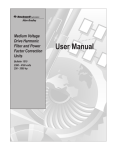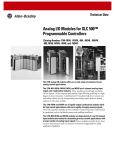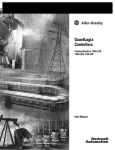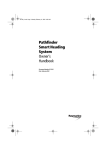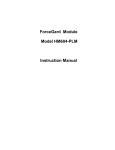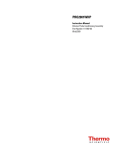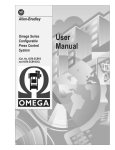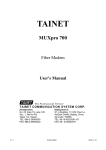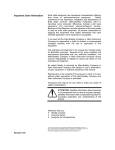Download SyncPro Installation Manual
Transcript
SyncPro™ Bulletin 1901 Installation Manual www.abpowerflex.com Important User Information Read this document and the documents listed in the Additional Resources section about installation, configuration, and operation of this equipment before you install, configure, operate, or maintain this product. Users are required to familiarize themselves with installation and wiring instructions in addition to requirements of all applicable codes, laws, and standards. Activities including installation, adjustments, putting into service, use, assembly, disassembly, and maintenance are required to be carried out by suitably trained personnel in accordance with applicable code of practice. If this equipment is used in a manner not specified by the manufacturer, the protection provided by the equipment may be impaired. In no event will Rockwell Automation, Inc. be responsible or liable for indirect or consequential damages resulting from the use or application of this equipment. The examples and diagrams in this manual are included solely for illustrative purposes. Because of the many variables and requirements associated with any particular installation, Rockwell Automation, Inc. cannot assume responsibility or liability for actual use based on the examples and diagrams. No patent liability is assumed by Rockwell Automation, Inc. with respect to use of information, circuits, equipment, or software described in this manual. Reproduction of the contents of this manual, in whole or in part, without written permission of Rockwell Automation, Inc., is prohibited. Throughout this manual, when necessary, we use notes to make you aware of safety considerations. WARNING: Identifies information about practices or circumstances that can cause an explosion in a hazardous environment, which may lead to personal injury or death, property damage, or economic loss. ATTENTION: Identifies information about practices or circumstances that can lead to personal injury or death, property damage, or economic loss. Attentions help you identify a hazard, avoid a hazard, and recognize the consequence. IMPORTANT Identifies information that is critical for successful application and understanding of the product. Labels may also be on or inside the equipment to provide specific precautions. SHOCK HAZARD: Labels may be on or inside the equipment, for example, a drive or motor, to alert people that dangerous voltage may be present. BURN HAZARD: Labels may be on or inside the equipment, for example, a drive or motor, to alert people that surfaces may reach dangerous temperatures. ARC FLASH HAZARD: Labels may be on or inside the equipment, for example, a motor control center, to alert people to potential Arc Flash. Arc Flash will cause severe injury or death. Wear proper Personal Protective Equipment (PPE). Follow ALL Regulatory requirements for safe work practices and for Personal Protective Equipment (PPE). Allen-Bradley, Rockwell Software, Rockwell Automation, and TechConnect are trademarks of Rockwell Automation, Inc. Trademarks not belonging to Rockwell Automation are property of their respective companies. Table Of Contents Product Description Chapter 1 Description ............................................................................................. 1-1 Documentation ....................................................................................... 1-1 Synchronous Motor Theory ................................................................... 1-2 Protection Features ................................................................................. 1-3 Theory of Operation ...................................................................... 1-3 Optional Equipment ........................................................................ 1-4 Display/Metering Features ..................................................................... 1-4 Hardware ................................................................................................ 1-5 Typical Synchronous Starter Components .............................................. 1-5 Motor Contactor ............................................................................... 1-5 Motor Contactor Pilot Relay ............................................................ 1-5 Field Voltage Relay .......................................................................... 1-6 Equipment Shutdown Relay ............................................................. 1-6 Phase Angle Transducer .................................................................. 1-6 Discharge Resistor ........................................................................... 1-7 Field Contactor ................................................................................. 1-7 Resistors RF1 and RF2 ..................................................................... 1-7 Analog/Digital Pulse Board .............................................................. 1-7 Input/Output Descriptive Listing ............................................................. 1-8 Control .............................................................................................. 1-8 Field Application ............................................................................... 1-9 Feedback .......................................................................................... 1-9 Fault Detection ............................................................................... 1-10 Status .............................................................................................. 1-11 Specifications ........................................................................................ 1-11 General Specifications ................................................................. 1-11 Specific Specifications ................................................................. 1-12 DTAM Specifications .................................................................. 1-12 Receiving and Storage Chapter 2 Receiving ............................................................................................... 2-1 Storage ................................................................................................... 2-1 Installation Chapter 3 Arrangements ......................................................................................... 3-1 Component ...................................................................................... 3-1 Open Frame ..................................................................................... 3-2 Integral ............................................................................................ 3-3 Grounding .............................................................................................. 3-3 Wiring Guidelines .................................................................................... 3-4 Summary .................................................................................................. 3-7 1901-UM020C-EN-P –June 2013 ii Table of Contents – SyncPro™ Instruction Manual Setup and Commissioning Chapter 4 Setup ..................................................................................................... Lithium Battery ............................................................................... Analog Card DIP Switches ............................................................. Programmer/Display DTAM .......................................................... RF1 and RF2 Resistor Setup ............................................................ Commissioning ...................................................................................... Programming the SyncPro Chapter 5 Set Points ............................................................................................... Set Point 1 • Minimum % Synchronous Slip Frequency ................. Set Point 2 • Power Factor Trip ...................................................... Set Point 3 • Power Factor Trip Time Delay .................................. Set Point 4 • Squirrel-Cage Protection Trip Time (at 95% speed) .... Set Point 5 • Squirrel-Cage Protection Trip Time (at 50% speed) .... Set Point 6 • Squirrel-Cage Protection Trip Time (at stall) ............ Set Point 7 • Function Number ....................................................... Set Point 8 • Incomplete Sequence Trip Time Delay ...................... Set Point 9 • Diagnostic Fault Mask ............................................... Additional Parameters............................................................................ Monitoring 5-1 5-2 5-2 5-2 5-3 5-3 5-3 5-4 5-5 5-5 5-6 Chapter 6 Power Factor.......................................................................................... Faults ..................................................................................................... Fault Detection and Diagnostics ...................................................... Power Factor Circuit Fault ............................................................. Troubleshooting 4-1 4-1 4-1 4-1 4-2 4-7 6-1 6-1 6-1 6-2 Chapter 7 Last Trip Codes • Table 7.A .................................................................. 7-1 Troubleshooting Guide • Table 7.B ....................................................... 7-2 Spare Parts Chapter 8 Spare Parts List for SyncPro ................................................................. 8-1 1901-UM020C-EN-P –June 2013 Chapter 1 Product Description Description The SyncPro consists of a programmable small logic controller (SLC 500) with the following additional peripheral items: • • • • • Data Table Access Module (DTAM) Power Factor Transducer Analog/Digital Pulse Board Conditioning Resistors Interposing Relays FCR and ESR The SyncPro system is designed to provide supervisory protection and field control to a brush-type synchronous motor controller, proper field application timing, squirrel-cage protection against long acceleration and stall conditions as well as running pullout protection by monitoring motor power factor. When combined with a suitable induction motor protection relay, the SyncPro provides the necessary overload protection to the brush-type synchronous motor. Important: Although the SyncPro makes use of some standard SLC 500 programmable controller components, it is imperative that the controller is a dedicated unit expressly for the control and protection of the field of a single synchronous motor. The firmware and hardware configuration must only be used for its designed purpose. Do not attempt to modify the controller in any way for another use. No additional SLC control cards can be added. Documentation The following publications have pertinent information for components used in or associated with the SyncPro: 1747-ND013 1747-NI002 1746-NM003 1900-2.10 900-1.0 SGI-1.1 1746-2.35 1746-2.36 Data Table Access Module – User Manual SLC500 Modular Hardware Style – Installation and Operation Manual Analog Card publication Measuring for Synchronous Motor Data Synchronous Motor Control Safety Guidelines for the Application, Installation and Maintenance Discrete Input and Output Modules SLC500 Modular Chassis and Power Supplies. 1901-UM020C-EN-P – June 2013 1-2 Product Description Synchronous Motor Theory The synchronous motor is a commonly used industrial motor favored for its higher efficiency, superior power factor, and low inrush currents. Typical applications that benefit from the constant operating speed include refiners, head box fan pumps, chippers, etc. Synchronous motors are particularly well suited to low RPM applications. The synchronous brush-type motor is composed of a three-phase stator winding, a DC rotor winding, and a squirrelcage winding. The stator winding is identical to that of an induction motor and, as such, the direction of motor rotation depends on the rotation of the stator flux. The direction can be changed by reversing two of the stator leads, just as it does with induction motors. The rotor contains laminated poles which carry the DC field coils that are terminated at the slip rings. It also has a squirrel-cage winding composed of bars embedded in the pole faces and shorted by end rings. The squirrel-cage winding is also known as “damper” or “amortisseur” winding. This winding enables the motor to accelerate to near synchronous speed so that the DC supply can be applied to the field windings for synchronizing the motor to the line (typically 95%). These field windings are connected through slip rings to a discharge resistor during start up. The resistor is required to dissipate the high voltages that are induced into the field windings from the stator, and it is removed from the circuit when the DC field voltage is applied. The synchronous motor can be compared to a transformer, with the three-phase stator resembling the primary and the field winding acting like a secondary. Through this transformer action, an induced voltage is generated in the motor field during starting. The induced signal can be used to protect the squirrel-cage winding by monitoring the motor speed during acceleration and to determine when the DC field can be excited for synchronization. At zero speed, the frequency induced into the field is 60 Hz, at 95% speed the frequency induced is 3 Hz (for a 60 Hz system). Once at 95% speed, the DC field is supplied with either 125 V DC or 250 V DC and the discharge resistor is removed from the circuit. The excitation in the field windings creates north and south poles in the rotor which lock into the rotating magnetic field of the stator. The slip rings are used to connect the field windings to the discharge resistor and static exciter. It is at these slip rings that the field resistance of the motor can be measured to confirm the required field voltage and current at rated power factor. If, for example, the field voltage is 125 V DC and the current is 20 amps DC, then the resistance measured should be about 6 ohms, based on Ohms Law. 1901-UM020C-EN-P – June 2013 Product Description Protection Features 1-3 Theory of Operation When the NOT STOP and START signals go high, a timer is started (refer to Figure 7.1). The START signal must be dropped before another start can be initiated. The timer is preset based on the slip frequency of the motor. If the timer expires prior to achieving the maximum asynchronous speed, the starting sequence will halt, the TRIP output will be dropped and the DTAM will display a message indicating the faulted condition. The TRIP signal is restored when there are no faults and the Fault Reset PB input is received. NOTE: The NOT STOP and START can be tied together to indicate a RUN condition to control the device without separate signals. The RUN output follows the start input if the motor is permitted to start, (i.e. no faults and the EQUIPMENT SHUTDOWN is high). If the programmed percentage of synchronous speed is obtained within set time limits (refer to programming of set point, Chapter 5), the FIELD RELAY is energized. The power factor is now monitored and displayed on the DTAM. If the power factor drops below the programmed values, the TRIP and FIELD RELAY outputs will be dropped and the DTAM will display a message indicating the faulted condition. Under normal conditions the FIELD RELAY is maintained until the NOT STOP signal is removed. The slip frequency is calculated from a square wave input representing the slip frequency. Based on this frequency, the allowable starting time is calculated. This calculation is based on three set points which are entered by the user, as well as a ‘function order’ used to shape the curve. The three required set points are: • maximum allowable starting times at the stalled condition • 50% speed • maximum programmed percentage of synchronous speed The time curve between stalled frequency and 50% speed is assumed to be linear. The time between 50% speed and the synchronizing speed is to the nth order such that unity makes it linear, 2-5 makes it exponential in nature. The higher the order, the shorter the times near to 50% speed and the higher the times near the synchronous speed set point (i.e. bottom of curve (time vs. frequency) is flatter and then rises more steeply). NOTE: If the time set point at the maximum programmed percentage of synchronous speed is set below that of the extended stall (i.e. 50% speed curve), the function between 50% speed and synchronous speed will also be treated as linear. (For example, the slope between 50% speed and synchronizing speed is flatter than the slope between stalled and 50% speed). 1901-UM020C-EN-P – June 2013 1-4 Product Description Protection Features (cont.) When the maximum programmed percentage of synchronous speed (set point) is obtained, the field coil is energized on the falling pulse of the negative square wave (i.e. a rising sinusoid) from the slip frequency generator. A fixed time period after synchronization, the autoload signal is raised. The field coil is energized only if the TRANSITION COMPLETE has been received. • Squirrel-Cage Winding Protection – Protects the squirrel-cage winding from long acceleration and stall conditions during starting. • Field Winding Application Control – The signal that triggers application of the field excitation when the programmed asynchronous speed is obtained. • Incomplete Sequence Timing Relay – Trips the system if the overall starting time is exceeded. • Pull Out Protection – Monitors the power factor during running to detect a loss of synchronism. • Field Voltage Failure Relay Input – Monitors the condition of the static exciter output. This relay must be supplied by the customer if the SyncPro is not supplied as a configured unit within a Rockwell Automation/Allen-Bradley motor controller. Optional Equipment • Field Current Failure Relay • Load and Unload Auxiliary Contacts – The outputs are energized 2 sec. after the field is applied and is maintained until the field is removed. Display/Metering Features The product in conjunction with the Data Terminal Access Module (DTAM) will perform the following metering/display functions: • • • • display all detected fault conditions display the slip frequency and starting time during startup display the power factor during run mode. accept set points through the DTAM for the following: – maximum % asynchronous speed [% of synchronous speed] – power factor set point and trip delay – maximum allowable time at stalled state (maximum slip) – maximum allowable time at 50% speed – maximum allowable time at synchronizing speed (typically @ 95% speed) – function order (allows adjustment of the slope of the acceleration/stall time trip curve). – incomplete sequence timer trip delay – fault mask for PF transducer diagnostics (Refer to Chapter 5 for complete details.) 1901-UM020C-EN-P – June 2013 Product Description Hardware 1-5 The system consists of the following hardware: • • • • • • • • • • • • • • SyncPro 1747-L532 1746-ITB16 1746-NIO4I 1746-0X8 1746-IA16 1746-A7 1746-P1 1747-DTAM 700-F220A1 80165-998-51 80025-817-01 80165-778-51 800T-PB16R 5/03 Processor : EEPROM High Speed DC Input Module Analog Input/Output Module Isolated Relay Output (or any 8-point output) 120VAC Input Module (or any 16-point input) 7-Slot Rack Power Supply Data Table Access Module Interposing Relay (FCR, ESR) Phase Angle Transducer 20 kilohm Tapped Conditioning Resistors Analog/Digital Pulse Board Red Illuminated Push Button : Contains specialized patented hardware for synchronous application on EEPROM that cannot be viewed/accessed. Typical Synchronous Starter Components The following list of components are devices which the SyncPro is connected to, or are part of the SyncPro protection package. Motor Contactor (M) The motor contactor is used to provide and switch the power supplied to the motor stator. It is controlled by the SyncPro package and is necessary to remove stator power in the event of a stop command or a trip condition. Two normally open contactor auxiliaries may be required; one mandatory N.O. contact to give contactor status information to the SyncPro, and one may be needed as a hold-in contact for the main control circuit. Motor Contactor Pilot Relay (CR1 or MR) This interposing relay allows the SyncPro output to pick up the main contactor coil. The power requirements of the pick-up coils used in most medium voltage motor starters would exceed the switching capability of the 1746-OX8 output contact. 1901-UM020C-EN-P – June 2013 1-6 Product Description Typical Synchronous Starter Components (cont.) Field Voltage Relay (FVR) When energized, this DC relay indicates that the DC exciter supply is healthy and producing an adequate level of DC excitation. The field voltage relay is required to prevent starting the motor unless DC excitation is available. A field voltage relay is recommended as the SyncPro does not have the ability to determine the level of the exciter output voltage. It is needed to prevent unnecessary starts when synchronization cannot occur. Equipment Shutdown Relay (ESR) (Component included with SyncPro) The ESR relay combines the status of customer supplied protective and interlock devices to a single contact input on the SyncPro. When ESR is energized, it is an indication that all external trip and interlock contacts to the SyncPro are in a "not tripped" condition. All external trips and interlocks must be wired in series with the ESR coil in order to be properly addressed by the SyncPro. Phase Angle Transducer (Component included with SyncPro) The phase angle transducer provides a conditioned 4- to 20milliamp signal to the analog module of the SyncPro system. The transducer is factory calibrated to provide a specific output at zero (0) lagging power factor, at 1.0 or unity power factor, and at zero (0) leading power factor. These factory settings must not be altered. The SyncPro processor scales and interprets this signal to compare it to the power factor trip set point and to cause a trip to occur if the power factor drops below the programmed value for more than the specified power factor trip time delay. If the DC excitation is lost, a low voltage condition exists, or the motor is being overloaded to a point where the motor can no longer maintain synchronous speed, the motor power factor will react by dropping to a very lagging value. This indicates that the motor is slipping poles and the controller should be shut down to protect the motor. The phase angle transducer monitors voltage across lines 1 and 2, along with the current in line 3 to obtain a power factor reading. When the reading is below the set points programmed, the SyncPro will shut down the starter. 1901-UM020C-EN-P – June 2013 Product Description 1-7 Discharge Resistor The discharge resistor is specified by the motor manufacturer for a specific application to obtain correct starting and pull in torques and to provide a means of discharging the motor induced field voltage when starting and stopping the motor. The field winding has more turns than the stator winding and when power is applied to the stator, the field acts like the secondary windings of a current transformer. A field winding without a discharge path will produce a voltage greater than its insulation rating, and as such, requires a means to discharge or limit the voltage. If the discharge resistor is not connected during a start, the induced voltage can build to a point where the field winding insulation can be damaged. The resistor is also used to provide reference points to the SyncPro synchronous motor protector (refer to Chapter 4). Field Contactor (FC) The field contactor provides two normally open and one normally closed power poles. The normally open contacts apply DC power to the motor field windings when the contactor is energized. Prior to energization and after de-energization, the normally closed pole makes the path to the discharge resistor to allow the dissipation of energy induced in the field during starting. It also provides a path to discharge the stored energy in the large inductive motor field winding on stopping of the motor. Resistors RF1 and RF2 These resistors are used to attenuate the voltage which reaches the analog/digital pulse board. Set up of these resistors is important because if the signal voltage to the board is too low (too much resistance) then pulses will not be produced. If too little resistance is used, the voltage may be too high which could damage the analog/digital pulse board. Refer to Chapter 4, page 4-2. Analog/Digital Pulse Board This board converts the voltage sinusoidal waveform across the discharge resistor and, by examining the zero crossings, creates a digital pulse train of an equal frequency to the induced slip frequency occurring in the discharge resistor. At start (zero speed), the frequency will be 60 Hz, at 95% speed, the frequency will be 3 Hz (for a 60 Hz system). This feedback is used by the SyncPro to determine the speed of the motor at any time during acceleration and when the motor has reached the desired speed set point to synchronize. 1901-UM020C-EN-P – June 2013 1-8 Product Description Input/Output Descriptive Listing Control NOT STOP (I:4/00) This signal must be maintained high for the SyncPro to operate. When the signal is taken low, the software identifies this as a normal stop for the motor. Important: The SyncPro does NOT have control over stopping the motor. The main portion of the motor controller performs this control function. The NOT STOP signal must be given in parallel to that of the hardware, i.e. from the same PLC output or push button. START INPUT(I:4/01) The rising edge of this signal starts the operation of the SyncPro. This signal is maintained high for two-wire control or may be dropped after initial starting if three-wire control is used. In both cases, this signal controls the START output. After a fault has occurred, this input must be taken low before another start command will be recognized. RUN OUTPUT(O:3/06) This output is used to control motor starting. It is the START input conditioned by all permissives. That is to say that this output will follow the state of the input as long as all permissives are met. Thus in two-wire control, this output is actually a RUN command and will stay high until either a fault occurs or a stop is issued. In three-wire control the output is maintained only as long as the input is maintained, a fault occurs, or a stop is issued. EQUIPMENT SHUTDOWN RELAY (ESR) INPUT (I:4/07) This fault input is used to group all external faults. It notifies the SyncPro that the system has stopped for an external reason. The SyncPro will send a message indicating the reason for the stoppage. In the normal state this signal is held high, going low on a fault condition. While this signal is low, a start signal will not be accepted. Typically, all emergency stops or external faults (i.e. overloads, motor protection relays) will be wired to an ESR relay. This relay is then fed into the SyncPro for logging and control and also tied into the hardware to stop the motor. TRIP (O:3/01) This output is high during normal conditions. When the SyncPro detects a fault, the output goes low and the SyncPro stops the motor. The trip output is typically wired into the ESR circuit. It will be set high when there are no faults and the FAULT RESET PB is momentarily raised high. 1901-UM020C-EN-P – June 2013 Product Description 1-9 Field Application TRANSITION COMPLETE CONTACT (I:4/06) (OPTIONAL) The field relay output will not be energized until this input permissive is given. Once the field relay is picked up, this permissive is no longer required. If the permissive is not given prior to the squirrel-cage protection timing out or the incomplete sequence timing out, the SyncPro will fault and stop the motor. If unused, it must be tied high. This input is intended for an external input such as the RUN contact of an autotransformer starter. It prevents synchronization until the autotransformer starter has first transitioned to full voltage RUN mode. FIELD RELAY (O:3/00) This output controls the field contactor relay which applies the field to the motor. This output is energized when the transition complete permissive is given and the synchronous setpoint has been reached. The field is then applied either on the rising waveform or after a fixed time period of one second if the motor synchronizes on reluctance torque. The output is dropped whenever the NOT STOP is removed, the EQUIPMENT SHUTDOWN RELAY is removed, or a fault is detected. Feedback MOTOR CONTACTOR FEEDBACK CONTACT (I:4/08) This input indicates to the SyncPro that the motor contactor is closed, confirming that the motor is running. It also allows the SyncPro to detect a fault in the contactor circuit. FIELD CONTACTOR FEEDBACK CONTACT (I:4/05) This input indicates to the SyncPro that the field contactor has picked up, confirming that the field has been applied. (The signal must come from the auxiliary of the coil which ultimately applies the field, i.e. contactor.) If missing, the SyncPro detects a fault in the field circuit. TRIP/RESET PB INPUT (I:4/02) This input from the push button on the panel will reset any fault condition in the SyncPro. Once no fault exists, the fault condition will be removed from the DTAM and the TRIP output will be set. 1901-UM020C-EN-P – June 2013 1-10 Product Description Input/Output Descriptive Listing (cont.) Fault Detection FIELD VOLTAGE RELAY INPUT (I:4/03) When the signal is low, it indicates a lack of field voltage. This input is monitored for a fault condition only while starting, prior to applying the field. Tie this input high if it is not used. When this contact is high, it verifies that the static exciter is providing an appropriate DC voltage. FIELD CURRENT RELAY INPUT (I:4/04) (OPTIONAL) When the signal is low, it indicates a lack of field current. This input is monitored for a fault condition after the field has been applied. Tie this input high if it is not used. This optional input verifies there is DC current flowing from the static exciter to the motor field. It is redundant since the power factor trip feature will trip if the field current is lost. POWER FACTOR (I:2/0) The signal supplied to the SyncPro is from the Phase Angle Transducer, representing a power factor of zero (0) lagging to zero (0) leading respectively. Note that the SyncPro firmware has been tailored to this specific transducer. No substitution is allowed. SLIP GENERATOR POWER (I:1/01) This fault input is monitored during idle and starting periods. It is normally held high by the power supply to the Slip Pulse Generator. SLIP GENERATOR NEGATIVE (-) (I:1/00) Connect to the negative terminal (N) of the Slip Pulse Generator. SLIP GENERATOR POSITIVE (+) (I:1/02) Connect to the positive terminal (P) of the Slip Pulse Generator. 1901-UM020C-EN-P – June 2013 Product Description 1-11 Status AUTO LOAD (O:3/07) Output is energized two seconds after the field is applied and remains closed until the field is removed from the motor by a stop or a fault. SCP TRIP (O:3/02) Output is set high when a Squirrel-Cage Protection Fault occurs. It is reset when the TRIP output goes high after pushing the reset button. This signal can be used for indication, via a pilot light, or it can be used as an optional trip output. MOTOR PULLOUT TRIP (O:3/03) Output is set high when the power factor lags for longer than the programmed trip time delay indicating that the motor has pulled out. It is reset when the TRIP output goes high after pushing the reset button. This signal can be used for indication, via a pilot light, or it can be used as an optional trip output. INCOMPLETE SEQUENCE TRIP (O:3/04) Output is set high when an Incomplete Start Sequence Fault occurs. It is reset when the TRIP output goes high. This signal can be used for indication, via a pilot light, or it can be used as an optional trip output. Specifications General Specifications Operating Power Input Line Voltage – 120 Volts AC 50/60 Hz Input Current – 0-5 Amps. Temperature and Humidity Temperature (Maximum Ambient) Humidity Operating 0°C to 40°C (32°F to 104°F) Storage -20°C to 65°C (-4°F to 149°F) 5 to 95% (non-condensing) Maximum Temp.: 35°C (95°F) 1901-UM020C-EN-P – June 2013 1-12 Product Description Specifications (cont.) Specific Specifications (for Phase Angle Transducer) General Accuracy: Housing: Weight: 3% span Flame retardant plastic case 2.4 kg maximum Climate Storage: Temp. range: Humidity: -20 to 70°C (-4 to 158°F) -20 to 70°C (-4 to 158°F) storage Operational @ 0 to 60°C (32 to 140°F) Calibrated @ 23°C (73°F) Up to 95% RH. Non-condensing Input Frequency: Current: Range (A): Burden: Voltage: Range (V): 50 or 60 Hz Any value between 0.2 and 10 A 20 - 120% 5 VA Maximum Between 115V/230V ±10% ± 20 % (20 - 120% with sep. aux.) Burden 1 VA maximum Overload Capacity Six times rated current for 30 seconds 1.25 rated voltage for 10 seconds Electrical Tests Dielectric Test: Impulse Test: Surge Withstand: Certification: 2kV RMS to BS 5458 5kV transient as BEAMA 219 & BS923 ANSI C37-90A CSA Approved DTAM Specifications Refer to Publication 1747-NC013, Appendix A-1, A-2. SLC500 Specifications Refer to Publication 1747-NI002, SHT 1-4 Power Supply Specifications Refer to Publication 1747-NI002, SHT 1-7 1901-UM020C-EN-P – June 2013 Chapter 2 Receiving and Storage Receiving Upon receiving the controller, remove the packing and check for damage that may have occurred during shipping. Report any damage immediately to the claims office of the carrier. NOTE: If the SyncPro is an integral component of a brush-type synchronous starter (Bulletin 1912B), special receiving and handling instructions will apply. For details, refer to the service manual provided with the equipment. Storage It is important to consider the following storage requirements if you are not installing your controller immediately after receiving it. • Store the controller in a clean, dry, dust-free environment. • Storage temperature should be maintained between -20°C and 70°C (-4°F and 158°F). • Relative humidity must not exceed 95%, non-condensing. 1901-UM020C-EN-P – June 2013 2-2 Receiving and Storage 1901-UM020C-EN-P – June 2013 Chapter 3 Installation Arrangements The SyncPro is offered in three arrangements. Component The SyncPro may be ordered as individual components for maximum flexibility when installing the controller. The user may then mount the components in a configuration most suitable to his main motor controller equipment layout. Care must be exercised to ensure the SyncPro processor has adequate ventilation provided around it. Refer to Figure 3.6 for wiring of the components. SLC 5/03 CPU INPUT OUTPUT INPUT OUTPUT INPUT SyncPro ˜ FAST DC SINK DTAM ANALOG ISOLATED RELAY 115 VAC Controls & Indicators Analog/Digital Pulse Converter Relays (FCR, etc.) To Discharge Resistor Resistor (RF) Resistor (RF) To Control Power Analog/Digital Pulse Converter To CT (Phase A) To Discharge Resistor Figure 3.1 – SyncPro Component Configuration 1901-UM020C-EN-P – June 2013 Installation 3-2 Arrangements (cont.) Open Frame The SyncPro components are mounted on a panel, except the DTAM display module and the illuminated push button for trip indication and reset function. See Figures 3.2 and 3.3 for mounting dimensions of the main unit panel, DTAM and 800T push button. Quick installation within the main controller is possible with this arrangement. NOTE: The Data Table Access Module (DTAM) is supplied with a two-meter cord for connection with the SyncPro processor. Be sure to mount the DTAM in a suitable location for this connection to be made. If a longer cord is required, refer to Publication 1747ND013 to find the appropriate catalog number. 18.02 [458] .38 [10] 16.75 [425] 20.00 18.95 [508] [481] 13.29 [338] .63 [16] 13.75 [349] Front View Note: Dimensions are in inches [millimeters]. Figure 3.2 – Mounting Dimensions 1901-UM020C-EN-P – June 2013 .36 [9] dia. (4) Mounting Holes 6.12 [155] Side View Installation 3-3 Open Frame (cont.) Analog/Digital Pulse Converter Board Fusible Terminal Blocks Conditioning Resistors, RF Terminal Blocks FCR Relay (DIN Rail Mounted) ESR Relay (DIN Rail Mounted) Phase Angle Transducer (DIN Rail Mounted) Bulletin 1746 7-slot Card Rack with P1 Power Supply Ground Bar Figure 3.3 – Component Layout Integral The SyncPro is also available as a component of a Rockwell Automation/Allen-Bradley synchronous motor starter (Bulletin 1912B) incorporating the components shown in Figure 3.3. Although the layout in the starter is different, control and functionality remain the same. Grounding The grounding required by the SyncPro panel has been brought to a common grounding bar mounted on the panel. It is important that once the unit is installed, that this grounding bar is wired to the starter ground bus. It is important that a proper ground is made as the SyncPro has a number of low voltage signals which, if not properly grounded, may be vulnerable to noise causing erratic operation. NOTE: For grounding requirements of the DTAM, refer to Publication 1747-NC013. 1901-UM020C-EN-P – June 2013 3-4 Installation Wiring Guidelines The SyncPro™ can accept either two- or three-wire control. The control chosen will determine the configuration of the control hardware. Consider the following two inputs and single output when selecting the type of control: • I:4/00 • I:4/01 • O:3/06 NOT STOP input START input RUN output If using two-wire control, the two inputs (I:4/00 and I:4/01) are tied together. They are both low in order to stop the SyncPro (refer to the summary on page 3-6) and both high in order to run the device. To start the device after a fault, the START input (I:4/01) must be taken low and then closed again. In this configuration, the RUN output acts as a run command. Refer to Figure 3.4. If using three-wire control, the NOT STOP input must be maintained high in order to run the device. Momentarily opening this input will cause the SyncPro to stop (refer to the summary on page 3-6). Momentarily closing the START input will start the SyncPro (given that all permissives are satisfied). In this configuration, the RUN output acts as a start command. Refer to Figure 3.5. RUN OFF Run Control Circuit I:4/00 NOT STOP I:4/01 START Emergency Shutdown Circuit ESR E-STOP O/L O:3/06 RUN CR O:3/01 TRIP ESR External I:4/07 EQUIP. SHUTDOWN Figure 3.4 – Two-Wire Control 1901-UM020C-EN-P – June 2013 Installation 3-5 In both cases, the RUN output will follow the state of the START input, provided that all starting conditions are met. Note that in all cases, stopping the motor is done via the hardwired control circuit logic, and notification only is given to the SyncPro™. Figure 3.4 shows a typical two-wire control circuit. The selector switch is used to control the NOT STOP and the START as a pair. It is also used to ensure the motor is stopped via the hardwired control circuit logic, (even though in this case the RUN output will be removed when the selector switch is turned off). The ESR circuit ensures the motor is stopped for any fault condition occurring either externally or when detected by the SyncPro. Once the ESR has dropped out (detected by the loss of I:4/07), the selector switch must be switched off and on to initiate a start. This prevents a premature start if the fault condition is cleared and the selector switch is still in the run position. Figure 3.5 shows a typical three-wire control circuit. The STOP PB must be maintained high in order to initiate a start and to run the system. The button also ensures that the motor is stopped via the hardware circuit. The momentary START PB is used to create a RUN (START) output signal of the same duration as the input signal as long as there are no faults detected by the SyncPro. START PB I:4/01 START STOP PB I:4/00 NOT STOP ESR O:3/06 RUN CR CR E-STOP O/L External ESR O:3/01 TRIP I:4/07 EQUIP SHUTDOWN Figure 3.5 – Three-Wire Control 1901-UM020C-EN-P – June 2013 3-6 Installation Wiring Guidelines (cont.) E-STOP O/L External O:3/01 TRIP ESR Equipment Shutdown Relay I:4/07 EQUIP SHUTDOWN PB START I:4/01 START PB STOP I:4/00 NOT STOP ESR O:3/06 RUN CR Main Contactor Pilot Relay FCR Field Coil Relay (Pilot Relay) CR O:3/00 FIELD RLY FCR * I:4/05 FLD CONT AUX * Auxiliary Contact from final coil in chain (if acceptable) I:4/06 TRANS CMP Eg. Not Used MC I:4/08 M CONT FDBK I:4/04 FLD CURRENT RLY FVR I:4/03 FVR RELAY PB RESET I:4/02 RESET Figure 3.6 – Typical Wiring 1901-UM020C-EN-P – June 2013 Installation 3-7 In this case (three-wire) since the START signal is only momentary, the hardware must perform the sealing function using the control relay, CR. The START output is really an extension of the START input, except that the output is conditioned by any fault conditions. The ESR circuit ensures the motor is stopped for any fault condition occurring either externally or when detected by the SyncPro. Once the ESR has dropped out (detected by the loss of I:4/07), a start will not be permitted until the fault condition is reset. It should be noted that in all cases, the TRIP output is removed when a fault is detected. This fault includes both external hardware faults (as recognized by the EQUIPMENT SHUTDOWN signal) and faults which are generated by the SyncPro such as a power factor trip. SUMMARY 1. The RUN output will follow the state of the START input, given that there are no faults detected by the SyncPro. 2. Once a fault has been detected, the START input must be taken low before the RUN output will be allowed to operate. 3. All motor stopping must be controlled by hardwired control circuit logic. The SyncPro is only notified of the stoppage in order to determine what is happening. Any time the motor stops without first removing NOT STOP input, an error condition will be detected. 4. When using three-wire control, a contact from the CR relay must be used to seal in around the RUN output. 1901-UM020C-EN-P – June 2013 3-8 Installation ○ ○ ○ ○ ○ ○ ○ ○ ○ ○ ○ ○ ○ ○ ○ ○ ○ ○ ○ ○ ○ ○ ○ ○ ○ ○ ○ ○ ○ ○ ○ ○ ○ ○ ○ Wiring Guidelines (cont.) ○ ○ Figure 3.7 – Typical Wiring Diagram (3-wire Control) 1901-UM020C-EN-P – June 2013 Chapter 4 Set up and Commissioning Setup Check the following components of the SyncPro once it has been installed. Lithium Battery Ensure the supplied lithium battery is connected. This battery maintains power to the processor, preserving programmed set points loaded into RAM memory through the DTAM. To verify the connection, remove the processor in slot 0 of the I/O rack. The battery is on the printed circuit board with wires extending from it to a keyed connector. The connector must be plugged into the matching keyed receptacle. Analog Card DIP switches Remove the analog card from slot 1 of the I/O rack and verify that the DIP switches on the side of the printed circuit board have both been set to the ‘ON’ position. For further details, refer to the analog card publication number 1746-NIO4I. These are normally set at the factory. Programmer/Display DTAM Prior to usage the DTAM must be configured as follows while connected to a functional SyncPro 5/03 with the Synchronous Protector program. Refer to the DTAM manual 1747-ND013 for more detailed information on the procedure. This setup procedure has been performed in the factory, but in case of difficulty, the following procedure may be used. Ensure the jumper in the back of the DTAM is connected between pins 1 and 2 to enable the MODIFY mode. • • • • • • • • • • Apply power to the SyncPro controller. On the DTAM, press the [7] and [INC] keys simultaneously until the Modify Setup Screen is obtained. Press [ENTER] (for Confirmation) Press [ENTER] (for English) Press the [INC] or [DEC] keys to show the number 2, press [ENTER] (for DTAM address) Press the [INC] or [DEC] keys to show 19200, press [ENTER] (for the Baud Rate) Press the [INC] key to show ON, press [ENTER] (for auto attach) Press the [INC] key to show ON, press [ENTER] (for Backlighting) Press the [INC] key to show ON, press [ENTER] (for Monitor Override) Press [ENTER] (to accept the setup). 1901-UM020C-EN-P – June 2013 4-2 Setup and Commissioning Setup (cont.) Programmer/Display DTAM (cont.) The DTAM will now re-attach to the SyncPro 5/03. The F()-1 and F()-2 Macros must now be programmed into the DTAM. Perform the following key sequences: • • • • [Shift][N][2][3][Shift][:][0][ENTER] [Shift][F()][F()][1][ENTER] [Shift][N][2][3][Shift][:][1][ENTER] [Shift][F()][F()][2][ENTER] – Value of N23:0 is shown – Macro 1 Defined – Value of N23:1 is shown – Macro 2 Defined Once the above instructions are completed, place the jumper on the plug inside the casing of the DTAM between pins 1 and 3, (or remove the plug altogether). RF1 & RF2 Resistor Setup The synchronous motor field discharge resistor feedback resistors (RF1, RF2) are necessary to attenuate the induced voltage waveform which appears across the resistor during starting. The resistors reduce the voltage which is seen at the terminals of the analog/digital pulse converter to a level which is acceptable to the optoisolators on the board. Guidelines for resistor settings are contained in the chart shown in Table 4.A (page 4-6). The resistance value shown is the amount of resistance which is required on each lead which is connected to the A/D pulse board (F1, F2). For example, if the induced voltage on the discharge resistor is 1000 V at zero speed and 600 V at 95 % speed (across the entire discharge resistor), then it is necessary to select taps on the RF1 and RF2 to provide 20 kilohms at RF1 and 20 kilohms at RF2. Discharge Resistor RF RF F1 20 kΩ 1901-UM020C-EN-P – June 2013 F2 20 kΩ 4-3 Setup and Commissioning RF1 & RF2 Resistor Setup (cont.) These settings must be made prior to any start attempt. Determining the induced voltage which will appear across the discharge resistor during starting can be done two ways: a) If motor data is available the voltage can be determined by multiplying the discharge resistance by the induced currents at zero and 95% speed as given by the motor manufacturer i.e. induced current @ 0 % speed – 20 Amps. induced current @ 95% speed – 12 Amps. discharge resistance – 50 ohms therefore, induced voltage @ 0 speed - 20A x 50 ohms = 1000V induced voltage @ 95% speed - 12A x 50 ohms = 600V b) A measurement can be taken using a storage oscilloscope or a strip chart recorder, refer to Rockwell Automation publication 1900-2.10 for correct set point values. The waveform obtained will have a peak value which must be converted to an rms value. This is done by dividing the peak to peak value by 2 √ 2 or 2.828. NOTE: When doing this, a portion of the discharge resistor only should be used, 1 ohm can then be used to determine the value which will be on the entire resistor. For example, a strip chart recording is taken across a 1 ohm portion of a 50 ohm discharge resistor. The following peak to peak values are obtained: 0 speed – 56 V P-P 95% speed – 34 V P-P 0 speed rms voltage across 1 ohm 95% speed rms voltage across 1 ohm = 56/2.828 = 34/2.828 = 20V = 12V 0 speed rms current across 1 ohm 95% speed rms current across 1 ohm = 20V/1ohm = 12V/1ohm = 20A = 12A Once the induced voltage has been determined, make the appropriate selection from Table 4.A. Wires from each end of the discharge resistor should then be determined to the appropriate taps on the RF1 and RF2 resistors. Both the 0 and 95% speed induced voltages must fall between the upper and lower limits defined on the chart. 1901-UM020&-EN-P – -XQH 4-4 Setup and Commissioning Setup (cont.) RF1 & RF2 Resistor Setup (cont.) Procedure for Selection of Resistors Discharge resistance Sample resistance – – ___________ ___________ ohms ohms 0 % speed peak to peak voltage 95% speed peak to peak voltage – – ___________ ___________ V (Vpeak@0) V (Vpeak@95) Induced voltage (0 % speed) Induced voltage (95% speed) – – ___________ ___________ V (Vrms@0) Vp0/2.828 V (Vrms@95) Vp95/2.828 Induced current (0 % speed) Induced current (95% speed) – – ___________ ___________ A (Arms@0) Vrms0/Rs A (Arms@95) Vrms95/Rs Induced voltage (0 % speed) Induced voltage (95% speed) – – ___________ ___________ V V I0 x Rd I95 x Rd 0 speed induced voltage across the entire discharge resistor = 50 ohms* 20 amps = 1000 volts 95% speed induced voltage across the entire discharge resistor = 50 ohms* 12 amps = 600 volts RF1/RF2 Resistance Required 1901-UM020C-EN-P – June 2013 ___________ Ohms Setup and Commissioning 4-5 RF1 & RF2 Resistor Setup (cont.) “RF” Resistor tap settings To SLC, Slot 1 To SLC 24V DC Power Supply Figure 4.1 – Discharge Resistor Set-up 1901-UM020&-EN-P – -XQH 4-6 Setup and Commissioning Setup (cont.) RF1 & RF2 Resistor Setup (cont.) Table 4.A – Feedback Resistor Values • Synchronous Field Feedback Board RF1/RF2 Resistance (K ohm) Lower Limit Upper Limit 2.5 60 160 5 120 320 7.5 170 480 10 230 640 12.5 290 800 Useable Voltage Range 15 350 950 17.5 400 1100 20 460 1300 Note: Resistance value is per resistor (two required). NOTE : Motor induced currents will cause a voltage to be produced across the synchronous motor starter field discharge resistor. This voltage is connected to the feedback resistors and the tap to be selected on these resistors is dependent on this voltage level. For example, if the discharge resistor value is 20 ohms and the induced currents are 30 amperes at 0 speed and 18 amperes at 95 percent speed, then the induced voltage seen by the feedback resistors will range from 600 volts (0 speed) to 360 volts (95% speed). The selection would then be 10 kilohms on each of the 2 resistors. In the event that the induced voltage proves to be higher than allowed by the chart, it will be necessary to tap the field discharge resistor at a point which will allow the value to fall within the chart. Refer to Rockwell Automation for assistance. 1901-UM020C-EN-P – June 2013 Setup and Commissioning Commissioning 4-7 1. Complete and verify that the setup procedures (pages 4-1 to 4-6) have been completed. This should include verifying that the parameters programmed into the SyncPro are appropriate for the motor. See Chapter 5 for further details on programming. 2. Verify that the SyncPro has been wired into the motor starter circuit as indicated by the wiring diagram. 3. Remove the wire from the Field Contactor Relay (FCR) coil either at the I/O point (0:3/0) or at the FCR coil itself. Tie back and insulate the wire so that it cannot accidentally short out to ground or another electrical point. This will disable the field contactor so that the starter will not attempt to synchronize. Important: The contactor must be disabled in this manner rather than removing the field cables from the contactor. The discharge path through the discharge resistor must be maintained; otherwise, a voltage high enough to damage the field insulation will occur at the open field windings. This is similar to the effect which occurs if a current transformer secondary winding is left open circuited. 4. If during the previous setup procedure for the discharge resistors RF1 and RF2, the induced currents were not known, then the next step would be to bump the motor with the RF1 and RF2 resistors disconnected. The method detailed in AllenBradley publication 1900-2.10 for determining the motor data by measurement using a strip chart recorder should be done at this time. The RF1 and RF2 resistors should then be set up as indicated on page 4-3 with the data obtained. It is necessary to use jumpers at the SyncPro trip output (O:3/1), and the run output (O:3/6), for the motor bump. ATTENTION: During the bumping procedure, the SyncPro does not protect the motor. Monitor the procedure closely to avoid damage to the motor. Do not use jumpers at the ESR contact as this will also eliminate any external protective trips such as line overcurrent, fault protection, etc. which are still necessary for the bump. Refer to Figures 4.2 and 4.3 for the jumper placement, and the points at which to disconnect the wires. ATTENTION: During synchronization, voltages that may exceed 1000 volts are present at the RF1 and RF2 resistors. To avoid shock hazard, do not touch the resistors. 1901-UM020C-EN-P – June 2013 4-8 Setup and Commissioning Commissioning (cont.) NOTE: The phase angle transducer, as wired from the factory, is set up for the customer to run his wiring with an ABC line orientation. If this was not observed, the user has two options. First, the line cables can be moved (switching any two incoming lines will do) so that ABC now exists (BCA or CAB are also acceptable), OR the current transformer leads to the transducer can be swapped at the transducer. 5. If the RF1/RF2 connections were removed for step 4, they should now be reconnected at this point and set to the appropriate tap. The motor may now be bumped for rotation. Allow the motor to accelerate to rated subsynchronous speed and monitor the following items at this time. • The time to accelerate to rated subsynchronous speed • The point at which the I/O point 0:3/0 picks up (which normally would energize the field contactor) occurs to see if it appears to be occurring at 95% speed • This will also prove that the power factor transducer connection is in the correct orientation with the incoming current and voltages. If the polarity is incorrect, switching the C3A and C3B connections should correct the situation. NOTE: The phase angle transducer connections are correct provided that the transducer power and voltage reference inputs are connected to Line 1 and 2 and the current reference is Line 3. If the incoming connections into the starter have been made B-A-C, rather than A-B-C, the polarity will also be incorrect even though the correct starter lines have been brought to the transducer. In either event, the correction is the same, reverse the C3A and the C3B current transformer connections. ATTENTION: To avoid damage to the motor, do not allow the motor to run without synchronizing (at 95% speed) for longer than required to perform this test. Most motors are only capable of running for about 60 seconds at 95% speed without synchronizing. 6. After completing the actions in Step 5, if the equipment appears to be operating in the correct manner, then the leads can be reconnected to the FCR coil which was removed in Step 3. 7. The motor can now be normally started. Once the motor has synchronized, a good check is to vary the DC excitation. Verify that when the DC current to the field is reduced, the motor power factor becomes more lagging and if increased, the motor power factor becomes more leading. 1901-UM020C-EN-P – June 2013 Setup and Commissioning 4-9 CPT H1 H2 X1 X2 L MT F3 1 4.0A M M M CR STOP START 2 3 12 I:4/00 M I:4/01 M M O Customer Interlocks M 2 O/L U U 20 1 R ESR 5 Main Contactor Pilot Relay (MR) Field Contactor Pilot Relay (FCR) FCR SS FC M Field Contactor (FC) SS 9 ESR 26 ESR O M SS 7 M 8 O:3/01 MR 6 O:3/00 FCR SS 4 O:3/06 Equipment Shutdown Relay (ESR) I:4/02 U U Phase Angle Transducer M MOV 1746-P1 M M CT1 M CT2 T1 C3A T2 FC M FC P F1S P F2 G N P C IN0 IN2 IN1 27 FVR INPUT FLR MN 28 FLR INPUT FC M 29 FC INPUT M TC MN (-) ESR M RF2 FC BLK BLK To 24 VDC Power Supply (Sheet 2) C R W BLK C 6 (Field Voltage Relay Input) I:4/04 (Field Loss Relay Current) I:4/05 (Field Contactor Feedback Contact) SYNCHRONIZATION ENABLE INPUT 30 I:4/06 (Transition Complete) M Phase Angle Transducer Output IN0+ M O:3/02 Q Pullout Trip O:3/03 IN0- IST Trip SLC Analog Input Module (Sheet 3) O:3/04 EQUIPMENT SHUTDOWN INPUT 31 SCP Trip 5 I:4/03 V (+) To SLC Slot 1 (Sheet 2) M M R2 R1 RF1 FVR T F2 M VAC NEUT. 120 VAC C3B 8 T3 (-) (+) 7 CT3 Synchronous Motor F1 Phase Angle Transducer I:4/07 (Reset Permitted) MAIN CONTACTOR INPUT 32 I:4/08 (Main Contactor Feedback Contact) 33 SCP Trip 34 Pullout 35 Incomplete Sequence (Squirrel-Cage Protection Trip) (Synchronous Pullout Trip) (Incomplete Sequence Trip) M Customer supplied equipment. Install any protective device external to the SyncPro in series in this To Customer Autoload Circuit if required Autoload output 36 O:3/07 8 N O P Q circuit as shown. Logic must be that contact is closed if running is permitted. FLC and TC are optional customer supplied inputs which are jumpered to terminal blocks if not used. Contact rating is 60 amp Make, 10 amp Break (inductive) – 10 amp continuous at 120V AC (A600) Refer to instruction manual for tap selection guidelines on RF1 and RF2 resistors. Analog card switch settings are: ON SW1 OFF 2 1 37 R Customer to take ground wire to ground bus (earth ground). S Ground at bottom left hand mounting screw for rack or grounding bar. T Line 1 to Line 2 voltage reference and Line 3 current reference must be maintained for proper operation of the phase angle transducer. U Wiring supplied on enclosed assembly only (1901-AADC10) for the open frame units. The customer must supply these wires in addition to mounting the illuminated push button. DTAM, STAM cable (1747-C10) and illuminated push button are supplied loose on open frame assemblies (1901-ANDC10). V Output rating is 30 amp Make, 3 amp Break (inductive) – 3 amp continuous at 120V AC. Figure 4.2 – Typical Schematic (Sheet 1 of 3) 1901-UM020C-EN-P – June 2013 Setup and Commissioning 4-10 ANALOG/DIGITAL BOARD TB1 TB2 C BLK R W BLK L G N F2 P F1 RF1 20 kOHM RF2 20 kOHM C V 1 F3 1 1 2 3 4 5 5 6 6 7 7 8 9 9 10 10 12 12 C3A C3A C3B C3B 20 20 1 26 27 28 31 29 30 SLOT 1 24 VDC Input 1746-IB16 31 32 33 34 IN 0 35 36 IN 1 37 IN 2 SLOT 0 5/03 CPU 1746-P1 BLK (Remove Jumper If present) 24VDC C 12 GROUND BAR 5 IN 3 IN 4 W COM 1 W R POWER SUPPLY 5 BLK R IN 5 + 120VAC Battery MOV VAC NEUT - GRD IN 6 IN 7 IN 8 #14 WIRE IN 9 4 IN 10 IN 11 1747-C10 IN 12 IN 13 IN 14 IN 15 DOOR EQUIPMENT (REAR VIEW) ON ENCLOSED UNITS 7 7 TRIP/RESET R 12 20 1 26 DTAM 1474-DTAM-E Figure 4.3 – Typical Schematic (Sheet 2 of 3) 1901-UM020C-EN-P – June 2013 DC COM DC COM 5 10 Setup and Commissioning 4-11 M Customer supplied equipment. N FLR and TC are optional customer supplied inputs which are jumpered to terminal blocks, if not used. O Contact rating is 60 amp Make, 10 amp Break (inductive) – 10 amp continuous at 120 V AC (A600). P Refer to instruction manual for tap selection guidelines on RF1 and RF2 resistors. Q Analog card switch settings are: R Customer to take ground wire to ground bus (earth ground). S Ground at bottom left hand mounting screw for rack or grounding bar. T Line 1 to Line 2 voltage reference and Line 3 current reference must be maintained for proper operation of the phase angle transducer. U Wiring supplied on enclosed assembly only (1901-AADC10) for the open frame units. The customer mustsupply these wires in addition to mounting the illuminated push button. DTAM, STAM cable (1747-C10) and illuminated push button are supplied loose on open frame assemblies. (1901-ANDC10) SW1 1 ON OFF 2 1 1 SS 5 FCR SS 6 12 ESR 9 1 5 7 20 31 5 6 7 9 10 C3A C3B 20 1 31 12 1 1 2 3 PHASE ANGLE TRANSDUCER 7 4 5 6 8 SLOT 3 120 VAC RELAY OUTPUT 1746-OX8 SLOT 4 120 VAC INPUT 1746-IA16 VAC 0 IN 0 OUT 0 6 FCR RELAY START IN 2 8 TRIP (NOT FAULTED) IN 3 VAC 2 SLOT 2 INPUT/OUTPUT MODULE 1746-NI041 IN0+ IN0ANLCOM IN1+ IN1- OUT 2 BLK 5 OUT 3 33 OPTIONAL SCP TRIP PILOT LIGHT 34 OPTIONAL MOTOR PULLOUT TRIP PILOT LIGHT IN 5 IN 6 IN 7 NOT USED IN 8 NOT USED IN 9 VAC 4 ANLCOM OUT 4 NOT USED VAC 5 OUT 0 OUT 5 ANLCOM IN 4 VAC 3 C VAC 6 NOT STOP IN 1 VAC 1 OUT 1 3 26 RESET 27 FIELD VOLTAGE RELAY M 28 FIELD LOSS RELAY (CURRENT) MN 29 FIELD CONTACTOR M FEEDBACK CONTACTOR 30 SYNCHRONIZATION ENABLE INPUT MN (TRANSITION COMPLETE) 31 EQUIPMENT SHUTDOWN RELAY INPUT (RESET PERMITTED) 32 MAIN CONTACTOR M FEEDBACK CONTACTOR IN 10 35 OPTIONAL INCOMPLETE SEQUENCE TRIP PILOT LIGHT IN 11 IN 12 IN 13 2 IN 14 RUN 10 3 NOT USED OUT 6 OUT 1 VAC 7 ANLCOM OUT 7 4 IN 15 36 AUTOLOAD 37 AC COM COMMONS CONNECTED INTERNALLY AC COM Figure 4.3 – Typical Schematic (Sheet 3 of 3) 1901-UM020C-EN-P – June 2013 4-12 Setup and Commissioning 1901-UM020C-EN-P – June 2013 Chapter 5 Programming the SyncPro Set Points Prior to use, the Synchronous Protector must be programmed with nine common set points and possibly one additonal parameter. To start the programming procedure a macro has been defined in the DTAM as F()-1. Press [ESC], then the [F()] key followed by the [1] key. The register N23:0 will be displayed. Enter a value of 1 and press [ENTER] to start the sequence. During the sequence, the following set points are entered: 1. 2. 3. 4. 5. 6. 7. 8. 9. Minimum % Synchronous Slip Frequency (% of synchronous) Power Factor Trip (% of unity) Power Factor Delay Trip ( x 0.01 Seconds) Squirrel-Cage Protection Trip – time at 95% speed Squirrel-Cage Protection Trip – time at 50% speed Squirrel-Cage Protection Trip – time at stall Function Order (1-5) Incomplete Sequence Trip Time Delay(Seconds) Diagnostic Fault Mask The programming sequence can be started in mid-stream by entering the above corresponding number to that of the parameter desired into the N23:0 register. For example, to enter the Function Order, without the need to enter the preceding set points, enter the value 7 in the N23:0 register. At each prompt, type the new set point if required and press [ENTER]. If the current set point is acceptable, simply press [ENTER], or [ESC]. If an invalid value is entered, a message indicating this will be displayed, showing the valid limits to be entered. Once the message is removed, a short pause occurs, and then the prompts resume. After the last entry is made, the data is saved in the SyncPro data tables. The data entry sequence may only be performed when the motor is inactive. If the motor is started while data is being entered into the DTAM, the data entry sequence will be aborted. The operating frequency of the starter is set to either 50 or 60 Hz by entering the desired value into N23:1. This word is accessed by the macro F()-2. Refer to publication 1747-ND013 for information on the usage of the 1747-DTAM. 1901-UM020C-EN-P – June 2013 5-2 Programming Set Points (cont.) Set Point 1 • Minimum % Synchronous Slip Frequency This set point determines the percentage of synchronous speed at which the DC voltage is to be applied by the field contactor. The SyncPro monitors the frequency of the induced voltage across the discharge resistor during starting. When this frequency indicates that the motor has achieved the desired subsynchronous speed at which it is allowable to synchronize, the SyncPro energizes the coil of the field contactor. The SyncPro ensures that the application of the field contactor coincides with the rising edge of the induced voltage waveform which makes for a smooth transition. If the motor pulls into synchronism due to reluctance torque, the SyncPro will detect no pulses and then will apply DC voltage to the field after a one second delay. Allowable Range: 2 to 10 % (slip at which synchronization will occur as a percentage of synchronous speed) Factory Default Setting: 5% (95% speed) Typically set at: 5% Set Point 2 • Power Factor Trip As discussed earlier, power factor can be used to determine if a motor has pulled out of synchronism due to loss of excitation, overloading or a severe undervoltage. At this time, the motor should be taken off line to protect the stator and field windings. Allowable Range: 60 to 100 (% of unity) Factory Default Setting: 80 (0.8 lagging power factor) Set Point 3 • Power Factor Trip Time Delay Once it is determined that the motor has a lagging power factor due to a pullout condition, the trip condition can be time delayed to allow the motor a brief opportunity to pull back into synchronism. Allowable Range: 0 to 100 s (0.01 second units) Factory Default Setting: 50 s (0.50 second delay) 1901-UM020C-EN-P – June 2013 Programming 5-3 Set Point 4 • Squirrel-Cage Protection Trip Time (at 95% speed) This time setting determines the maximum length of time the synchronous motor may run at 95% speed before it is shut down. The squirrel-cage winding of the synchronous motor is not rated to run the motor continuously even at no load and therefore must be shut down if synchronism does not occur. Time should be set to motor manufacturer's specifications. Allowable Range: Factory Default Setting: 5 to 80 seconds 5 s (5 seconds) Set Point 5 • Squirrel-Cage Protection Trip Time (at 50% speed) It is possible that a synchronous motor can accelerate only to an intermediate speed and either not accelerate further or take too long to accelerate further due to overloading. This would cause the squirrel-cage windings to overheat if allowed to continue unchecked. This setting limits the time that the motor can operate at 50% speed to the safe maximum recommended by the manufacturer. Allowable Range: Factory Default Setting: Set Point 6: 2 s to Value in Set Point 4 2 s (2 seconds) Squirrel-Cage Protection Trip Time (at stall) In the event that a synchronous motor fails to accelerate at start up it will go into a stall condition at zero speed. This can occur if the motor is overloaded at start. The time entered at this set point should be the maximum allowable stall time on the Squirrel-Cage Winding as defined by the motor manufacturer. NOTE: The squirrel-cage winding of a synchronous motor has a very limited capability. Generally, the stall time allowed by the squirrel-cage winding is less than the time that the stator winding is capable of. It is possible that a motor with a stator capable of a 20 second stall would have a rotor which can only endure a stall condition of 5 seconds. Allowable Range: Factory Default Setting: 1 s to Value in Set Point 5 1 s (1 second) 1901-UM020C-EN-P – June 2013 5-4 Programming 1901-UM020C-EN-P – June 2013 Programming 5-5 Set Point 8 • Incomplete Sequence Trip Time Delay Once a synchronous starter has been commissioned, the acceleration and synchronization times should remain fairly consistent provided that the starting load does not vary significantly. The incomplete sequence timer can be set to a time delay that is slightly higher than the slowest acceleration time. The aforementioned squirrel-cage protection features protect the motor, but they also let it go to its thermal limitations. The ISTR set point can be adjusted to take the starter off-line earlier than the squirrel-cage protection trip time (set point 5) in the event of a field contactor failure or some other mechanical problem that prevents synchronization. This action minimizes motor heating during an equipment failure. Allowable Range: 1 to 80 seconds Factory Default Setting: 3 seconds Set Point 9 • Diagnostic Fault Mask This parameter is used to define a fault mask that will disable individual diagnostic faults associated with the phase angle transducer. The following values for the fault masks are used. 0 = All faults are enabled (default) 1 = Commissioning faults are disabled. This consists of Reversed PF @ SyncPro and CT Reversed 2 = All Diagnostics associated with the Power Factor are disabled 16 = Reversed PF @ SyncPro 32 = All of the following individual faults are disabled: 64 = No Transducer Input 128 = CT Open/Shorted 256 = CT Reversed 512 = No Signal @ SyncPro 1024 = Transducer Problem It is possible to selectively mask individual faults by adding up the fault values and entering the result. For example, to disable the Reversed PF @ SyncPro and No Signal @ SyncPro, the mask value would be 528 (16 + 512). NOTE: The value entered during prompting may not be the same value displayed if the value can be represented more clearly by some other combination of faults, ie. the value of 272 (16 + 256) corresponds to 1. 1901-UM020C-EN-P – June 2013 5-6 Programming Additional Parameters System Frequency The SyncPro can function on either 50 or 60 Hz power systems. The unit as standard is shipped to operate at 60 Hz. The unit may be changed to operate at 50 Hz by entering a value of 50 in integer word N23:1. To change back to 60 Hz, a value of 60 can be reentered. To access word N23:1, press [ESC], then the [F()] key followed by the [2] key. The register will be displayed. Enter the desired value and press [ENTER]. Allowable Range: 50 or 60 Hz Factory Default Setting: 60 Hz 1901-UM020C-EN-P – June 2013 Chapter 6 Monitoring Power Factor Power in DC circuits is the product of voltage and amperes, thus: W (watts) = E x I However, in AC power circuits some period of time in each cycle may have voltage and current of opposing sign (positive or negative) and their product will be negative, denoting negative power. This must be subtracted from the positive power for each cycle to yield the net power. The correction factor applied to make this is then a factor by which we multiply apparent power to obtain actual power. This is known as Power Factor. In a single phase AC circuit we find that: W = E x I x PF = POWER and that VA (volt-amperes) = E x I = APPARENT POWER For each cycle the power is positive when E and I are both either positive or negative. The power is negative when one value is positive with the other negative. The result is a power flow of twice the line frequency, in and out of the load with the actual power transmitted being the difference of the two. Mathematically, it can be demonstrated that the Power Factor of a circuit is equal to the cosine of the angle θ of lag or lead of the current with respect to the voltage. Faults Fault Detection and Diagnostics The product incorporates numerous fault detections in addition to the starting squirrel-cage protection and running pullout protection previously mentioned. Prior to starting the motor, diagnostics are performed that detect the: a) b) c) d) Lack of 24V supply to the slip frequency generator. Reversed Power Factor Leads between the SyncPro and isolator. Lack of the EQUIPMENT SHUTDOWN (external fault) signal. Loss of Setpoint Data. 1901-UM020C-EN-P – June 2013 6-2 Monitoring Faults (cont.) Fault Detection and Diagnostics (cont.) Upon starting the motor, additional diagnostics are performed. Any of these conditions will abort the start. Diagnostics performed are: a) Lack of either pulse signal from the slip frequency generator. b) Lack of field voltage or field current (if applicable). c) Power Factor Transducer Circuit Fault. Power Factor Circuit Fault This fault covers a number of possibilities such as reversed leads at the CT, shorted CT input, loss of control power to transducer or a faulted transducer. An incomplete start sequence timer (setpoint parameter) is utilized to abort the starting if abnormal periods are encountered. This time is set independent of the squirrel-cage protection times. While the motor is running, the motor is protected by monitoring fault conditions for: a) Loss of synchronization. Minimum power factor lag is selectable, as is the duration of running. b) Loss of feedback from the field contactor. c) Loss of the EQUIPMENT SHUTDOWN caused by an external fault. In all cases, faults are displayed on the DTAM and can be reset via the RESET push button. 1901-UM020C-EN-P – June 2013 Chapter 7 Troubleshooting Last Trip Table To aid in troubleshooting, the unit stores the last 10 recorded faults. These can be accessed by viewing the contents of the data file N22:0, (refer to the DTAM manual 1747-ND013 for information on data table access). This file forms a circular queue from N22:1 to N22:10 such that when full, the oldest fault is discarded making room for the newest. The value in N22:0 gives the most recent fault. For example: N22:0 has the value of 6. The most recent fault is found in N22:6, the one preceding it at N22:5. The fault at N22:10 precedes the fault at N22:1 in a circular fashion. The faults are denoted by the following fault codes: Table 7.A – Last Trip Codes Fault Code Description 1 Phase Lag (Pull Out) 2 Squirrel-Cage Protection Trip 4 Incomplete Start Sequence Time Exceeded 8 Power Factor Transducer Ckt 16 Pulse Board 24 V Failure 32 Field Voltage Loss 64 Field Current Loss 128 No Field Coil Feedback 256 Reversed PF @ SyncPro 512 External Hardware Fault 1024 Pulse Board Positive pulse missing 2048 Pulse Board Negative pulse missing 4096 Contactor Feedback 8192 Set Point Data Lost If more than one fault occurs simultaneously, the value shown will be the total of the last trip codes. ie. if Field Current Loss coincided with a Pull Out, the value would be 64+1=65. 1901-UM020C-EN-P – June 2013 7-2 Troubleshooting Table 7.B – Troubleshooting Guide Problem or Trip indicated Pullout trip (power factor) [POWER FACTOR TRIP] Squirrel-cage Protection Trip [SQ. CAGE PROT’N] Incomplete Start Sequence Time Exceeded [INCOMPLETE START] No Transducer Input [PF–NO XDCR INPUT] Indication of the following conditions • • • • Motor overloaded Loss of DC excitation Static exciter DC current level set too low Motor overloaded at start • The transducer is putting out less than 12 mA when the motor is off (should be 12 mA) • Check the wiring for the voltage sensing on the transducer board. • Replace phase angle transducer board if necessary. • Replace analog card in SyncPro rack • Check the wiring between the CT and the transducer board. • Replace the CT if necessary. • Reverse the leads of the CT at the transducer board. • Check the wiring between the transducer board and the SLC analog card. • Ensure that there is power to the transducer board. • Replace the SLC analog card or transducer board as required. • This is an all-encompassing fault and could include anything from the CT, the transducer board, or the SLC analog card. • Check the connections at the A/D pulse board. CT Reversed [PF–CT REVERSED] No Signal @ SLC [PF–NO SIGNAL@SyncPro] • The CT is incorrectly wired to the transducer board. • There is no signal at the SLC analog card from the PF transducer board. Transducer Problem [PF–XDCR PROBLEM] • The transducer is behaving unpredictably. Pulse Board 24 V Failure [PULSE BOARD 24 V] • Connection has not been made between the analog/digital pulse board and the SyncPro DC input card or from the discharge resistor to the same A/D pulse board. • 1746-P2 power supply has had a failure of the 24 V supply. No Field Coil Feedback [FIELD CONTACTOR] Reversed PF @ SyncPro [REVERSED PF@SLC] External Hardware Fault [EXTERNAL TRIP] 1901-UM020C-EN-P – June 2013 Lessen the motor loading and/or overload Repair static exciter Increase current setting on static exciter Remove or lessen load for start • Remove or lessen load for start • Replace coil(s) • The CT is either open or shorted. Field Current Loss [FIELD AMPS LOSS] • • • • • Motor overloaded at start • Field contactor or FC pilot relay coil failure CT Open/Shorted [PF–CT OPEN/SHORT] Field Voltage Loss [FIELD VOLT LOSS] Possible Solutions • The static exciter is not actively producing DC or the FVR relay coil has failed. • Wrong polarity on FVR coil. • Incorrect voltage rating of FVR coil. • Exciter Enable (EE) relay did not pick up. • The current relay which monitors the motor field current is not providing an energized contact to verify that the static is functional. • The SyncPro has requested the field contactor to energize but the feedback contact from this contactor is not showing as closed. • The connections from the PF transducer to the analog card have been accidentally reversed. • An external device to the SyncPro is not functioning as expected. • Check fuse in power supply. Check for 24 V at power supply. Replace power supply if necessary. • Replace A/D pulse board. • Service the static exciter or repair the FVR relay. • • • • Check polarity on FVR coil. Check voltage rating of FVR coil. Verify the control circuit. Check both the field current relay and the static exciter for possible failures. • The field contactor coil has failed. Replace the coil. • The connection to the FC auxiliary has not been made. Check the wiring. • The FC auxiliary contact has failed. Replace the contact. • Switch the positive and negative transducer output leads at the analog card. • Check external devices. Troubleshooting 7-3 Table 7.B – Troubleshooting Guide (cont.) Problem or Trip indicated Indication of the following conditions Possible Solutions Pulse Board Positive and Negative Pulse Missing [PULSE BOARD +’VE] [PULSE BOARD –‘VE] • The SyncPro is not seeing a pulse train being supplied from the A/D board at the time of starting. Contactor Feedback Lost [MOTOR CONT. FDBK] • The SyncPro monitors the status of the synchronous motor stator contactor while running. • Pulse train would be lost if either the A/D card failed, the RF/RF2 selection is incorrect, or if the connection is not made from the A/D board to the SyncPro. • Review the RF1/RF2 setup parameter and verify the procedure performed (see ‘Commissioning’, item 4, on page 4-7). • The main contactor coil has failed. Replace the coil. The connection of the M auxiliary contact has not been made. Check the wiring. • The contact has failed. Replace. • Ensure the connector is matched properly. • Replace the I/O board. • Check the battery located in the processor module. The battery has either been depleted or the plug-in connection has not been made. Note: This will occur when a new unit is plugged in for the first time (see Chapter 4). • Turn the key switch to the «RUN» mode position. Set Point Data Lost [SETPT DATA LOST] Halt Synch Relay • The RF1/RF2 resistor selection is not correct. The signal is too weak to provide the necessary pulse train. • The male/female connector of the vacuum contactor is not matched properly. • The SLC I/O card #4 input 8 is faulty. • The parameters entered into the SyncPro are retained in battery backed up RAM memory. These setpoints are not being retained by the SyncPro unit. • The key switch on the SLC 500 processor may be in program mode. NOTE: The phase angle transducer, as wired from the factory, is set up for the customer to run his wiring with an ABC line orientation. If this was not observed, the user has two options. First, the line cables can be moved (switching any 2 incoming lines will do) so that ABC now exists (BCA or CAB are also acceptable), OR the current transformer leads to the transducer can be swapped at the transducer. 1901-UM020C-EN-P – June 2013 7-4 Troubleshooting 1901-UM020C-EN-P – June 2013 Chapter 8 Spare Parts SyncPro Spare Parts List Table 8A – Spare Parts List Part Number 1746-IA16 1746-ITB16 1746-NIO4I 1746-OX8 1746-P1 1746-F1 1747-L532 1747-BA 1747-DTAM-E 1747-C10 1747-C20 800T-PB16R 800T-N65 800T-N40 700-F220A1 X-251089 80165-778-51-R 80025-817-01-R 700DC-P200Z1 700DC-P200Z2 80190-020-01-R 80190-020-02-R Designation 1746-IA16 1746-ITB16 1746-NIO4I 1746-OX8 1746-P1 — SLC 5/03 CPU — 1747-DTAM-E 1747-C10 1747-C20 Trip/Reset FCR, ESR F3 — 20 kilohms tapped FVR 120 V 240 V Description Quantity 120 VAC Input Module DC Input Module Analog Input Module 120 VAC Relay Output Power Supply Replacement Fuse for 1746-P1 Processor with 12K User Instr. Lithium Battery Assembly Data Table Access Module Cable, Processor – DTAM for 1901-AADC10 Cable, Processor – DTAM for 1901-ANDC20 Red Illuminated Push Button Lamp for Red Push Button Lens for Red Push Button Relay Fuse 4 amp. Analog/Digital Board Power Resistor 20 kilohms tapped Field Voltage Relay – 125 V DC exciter Field Voltage Relay – 250 V DC exciter 1 1 1 1 1 1 1 1 1 1 1 1 1 1 1 1 1 2 1 1 1 1 Phase Angle Transducer Board 1901-UM020C-EN-P – June 2013 8-2 Spare Parts 1901-UM020C-EN-P – June 2013 Medium Voltage Products, 135 Dundas Street, Cambridge, ON, N1R 5X1 Canada, Tel: (1) 519.740.4100, Fax: (1) 519.623.8930, www.ab.com/mvb Publication 1901-UM020&-EN-P – -XQH Supersedes Publication 1901-80%(13 – $SULO Copyright © 20 Rockwell Automation. All rights reserved. Printed in Canada.























































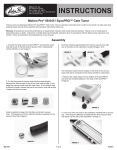
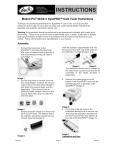

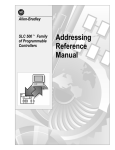
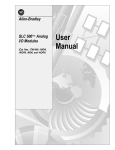
![取扱説明書[SR-PB4/PBE2] (4.17 MB/PDF)](http://vs1.manualzilla.com/store/data/006638833_3-2a716753bfba788481430d553dfac937-150x150.png)
